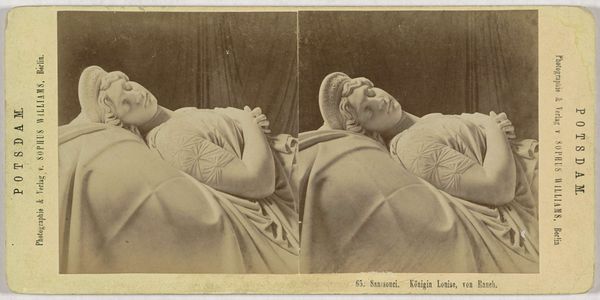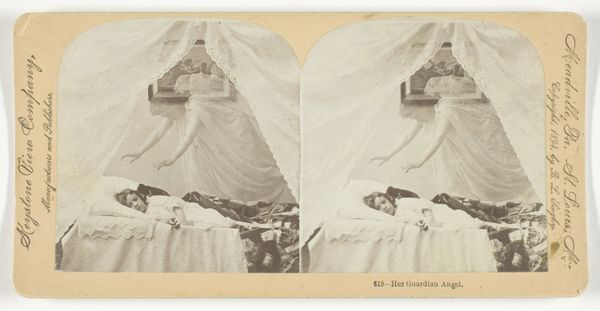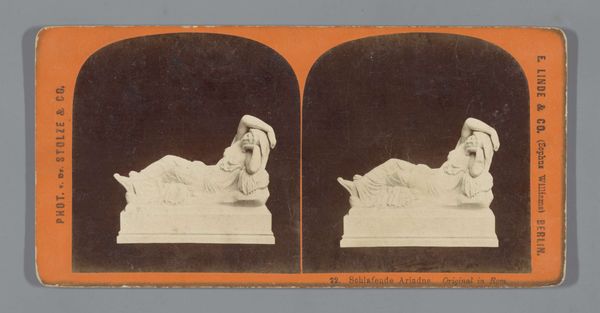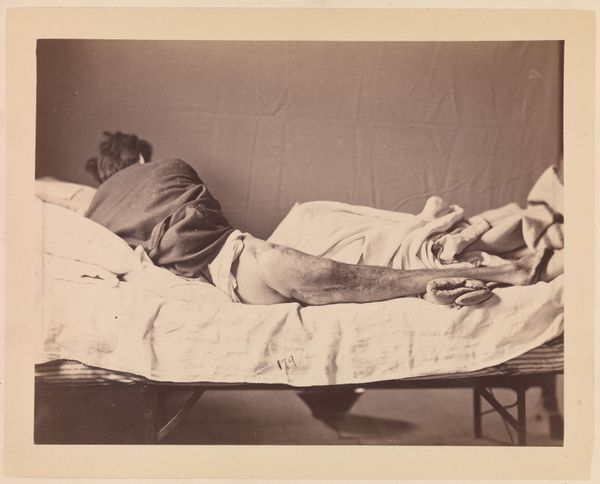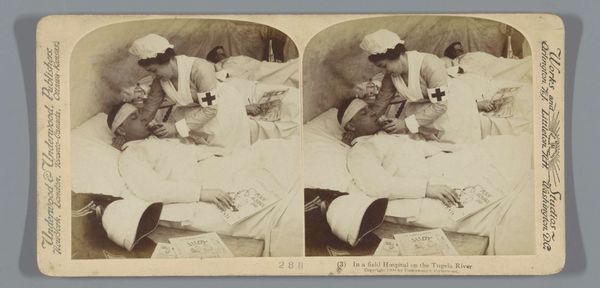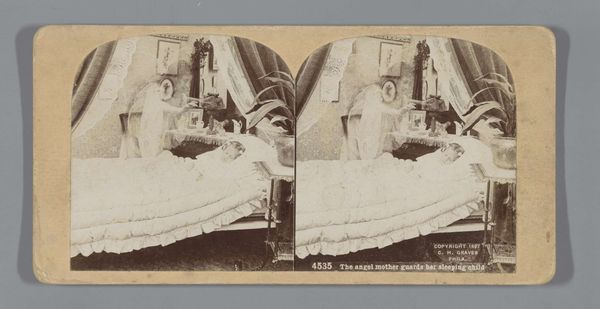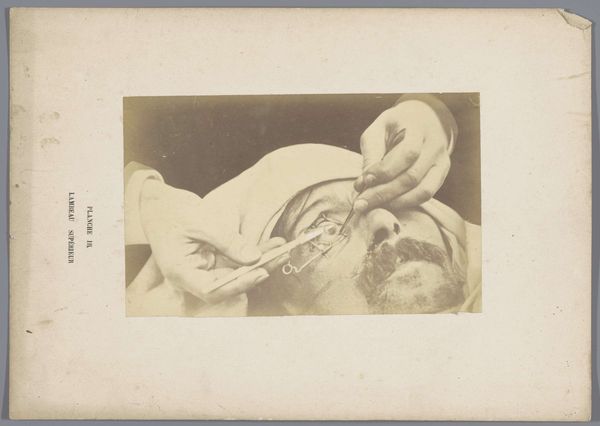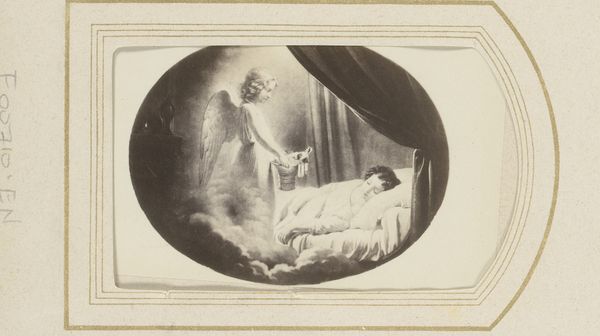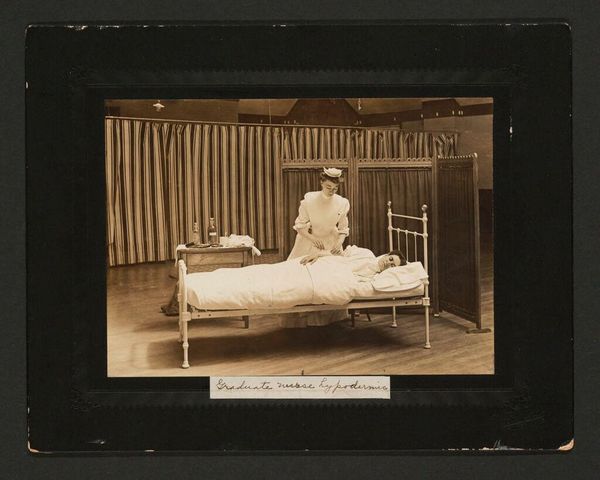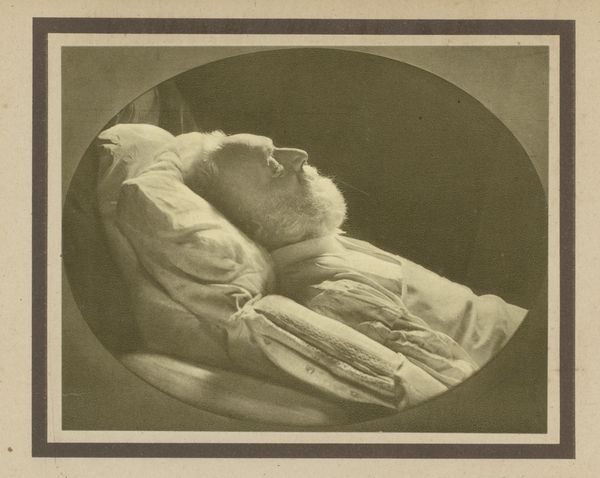
Sarcofaag van koningin Louise in het Mausoleum van Slot Charlottenburg, Berlijn 1873 - 1890
0:00
0:00
Dimensions: height 86 mm, width 177 mm
Copyright: Rijks Museum: Open Domain
Curator: This stereoscopic albumen print, dating from 1873 to 1890, captures the sarcophagus of Queen Louise in the Mausoleum of Charlottenburg Palace in Berlin. It was created by Sophus Williams. The image offers us more than just a depiction; it presents a meditation on memory and historical representation. Editor: The first thing that strikes me is how staged it all feels. The draped backdrop, the almost too-perfect lighting on the sarcophagus. It highlights, for me, the deliberate act of crafting this image as a consumable object. You can almost smell the darkroom chemicals. Curator: Indeed. Drapes behind the sarcophagus remind me of ancient Roman funerary art, a style of dramatic mourning and remembrance favored during that time. Here, they create a sense of solemn theatre, elevating Queen Louise to an almost mythical status. The queen becomes a symbolic representation of Prussian virtue and suffering, resonating with national identity after a time of crisis. Editor: And think about the labour involved: mining the silver, preparing the albumen, meticulously printing. Even something meant to represent eternal rest is deeply entwined with labor, trade, and the capitalist mechanisms of the 19th century. Stereoscopic photography was a relatively new technology and popular because it produced the optical illusion of depth from flat, two-dimensional photographs. Curator: True. That illusory depth brings an unexpected immediacy. And look at how Williams carefully positioned the light to evoke feelings of reverence and vulnerability, almost as though revealing a secret grief. This wasn’t just documentation. There’s intent, even artistry, behind every click. Notice that the photograph aesthetic recalls earlier painting of that time as well. Editor: I can also see how someone viewing this in the late 19th century, through a stereoscope, would engage with the image itself. It highlights how our relationship with photographic art is always shifting in relation to the process, and reception, through consumerism. Curator: It's amazing how this image blends objective recording with profound, constructed symbolism, forcing us to examine our connection with figures of the past, particularly their iconography of ideal beauty. Editor: Absolutely. A compelling intersection of materiality, historical moment, and constructed image. Curator: It prompts us to consider both the historical memory embedded within, and its deliberate construction in an age defined by massive production of photographies.
Comments
No comments
Be the first to comment and join the conversation on the ultimate creative platform.
